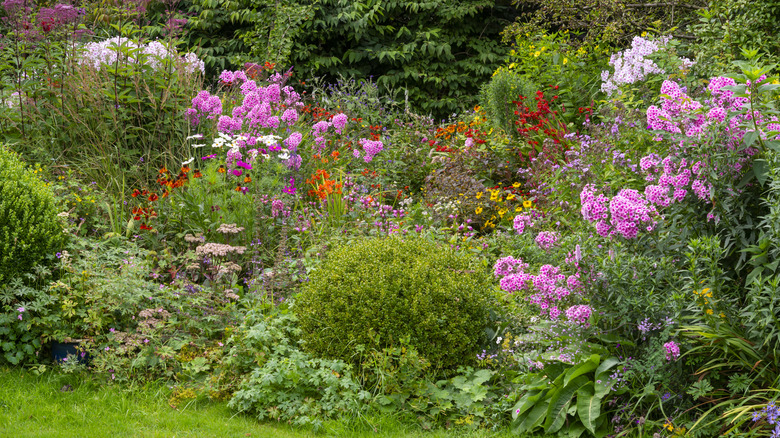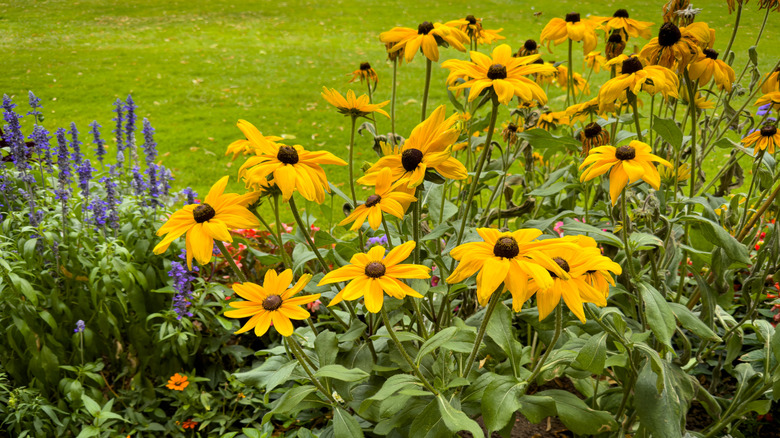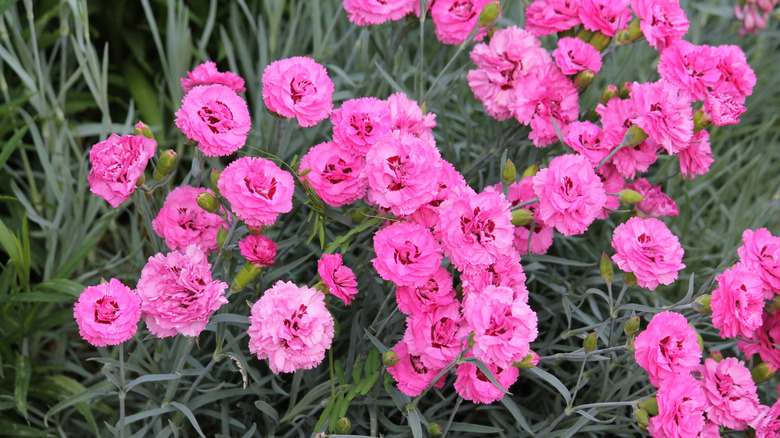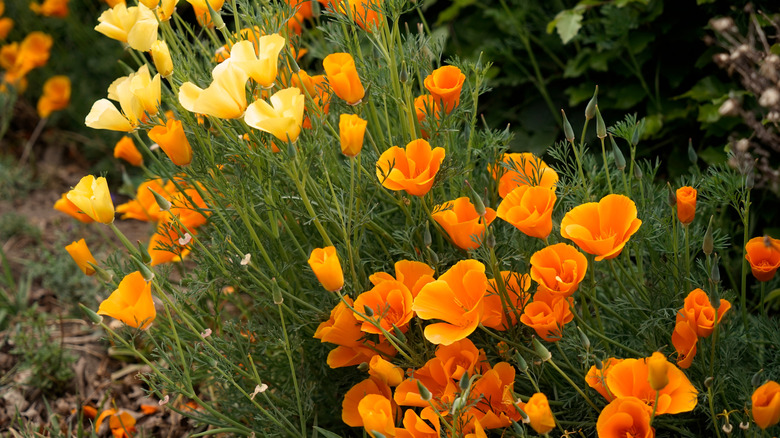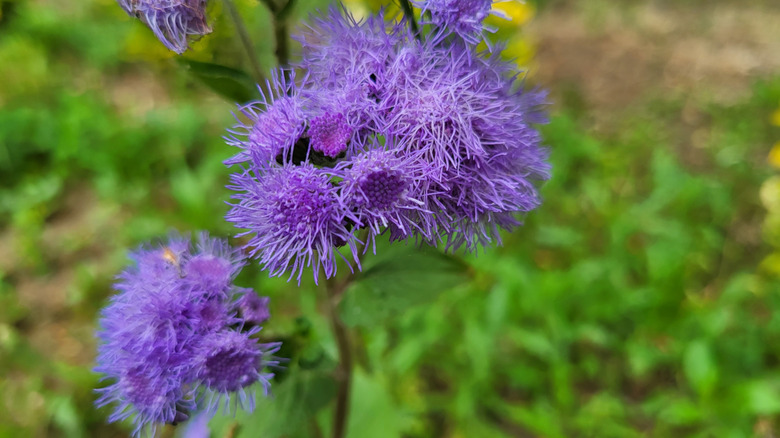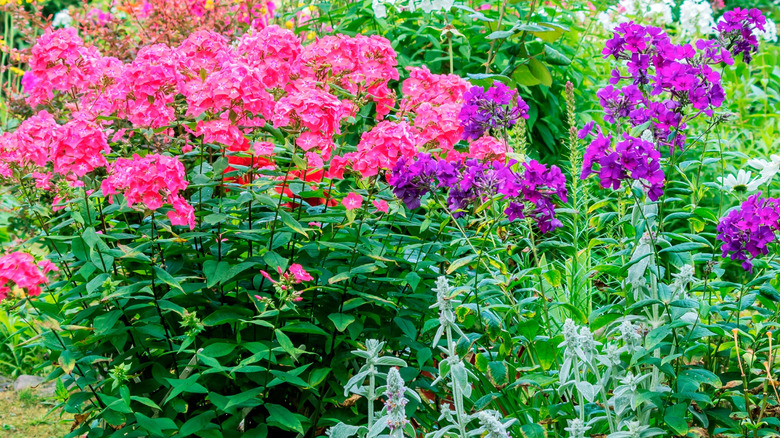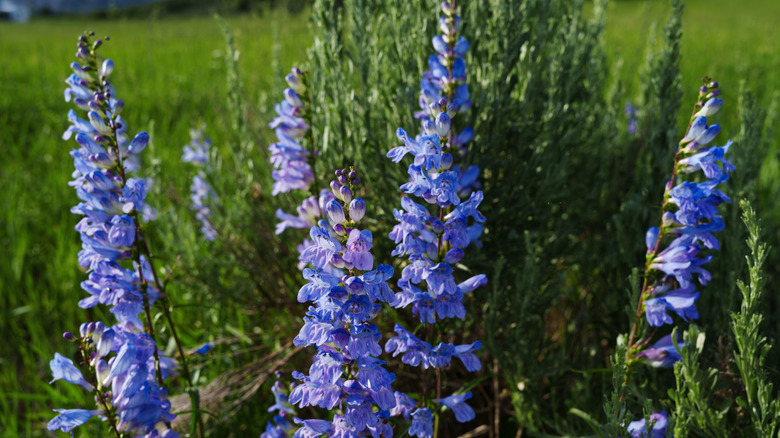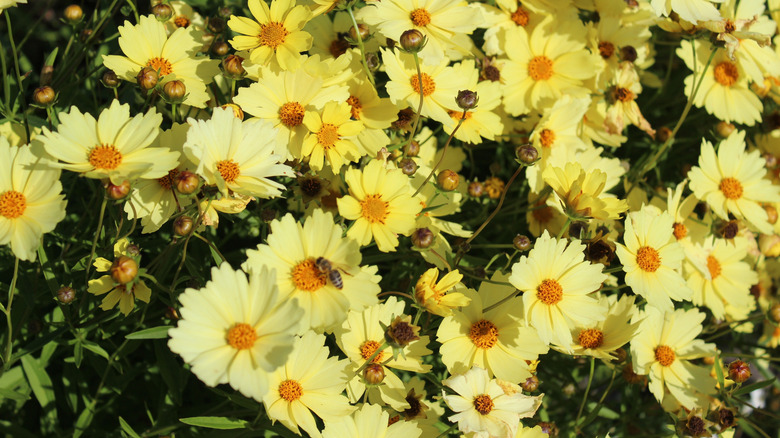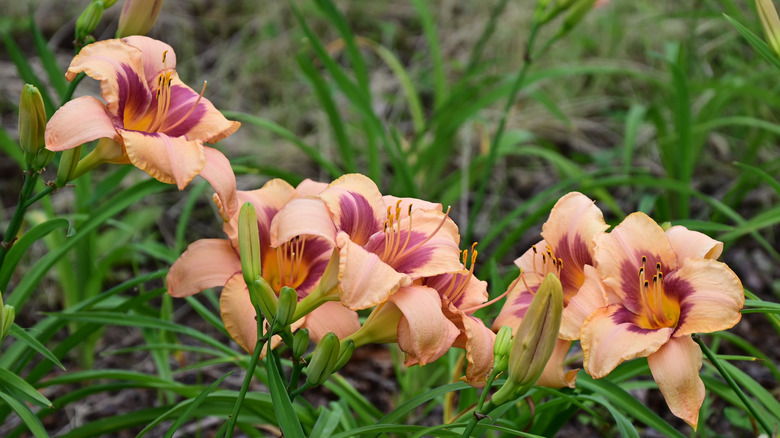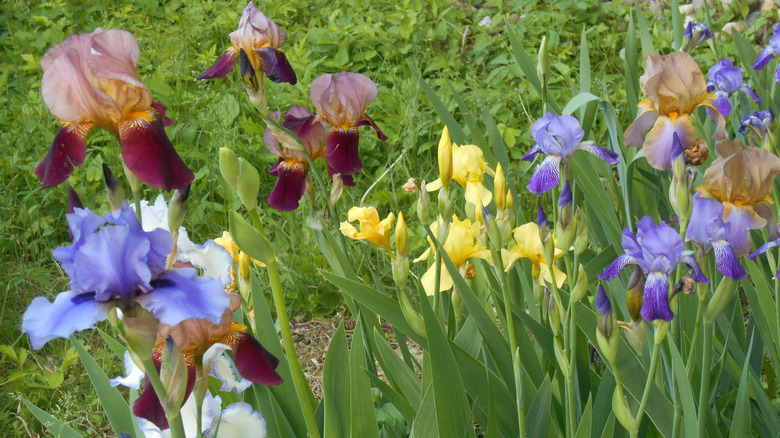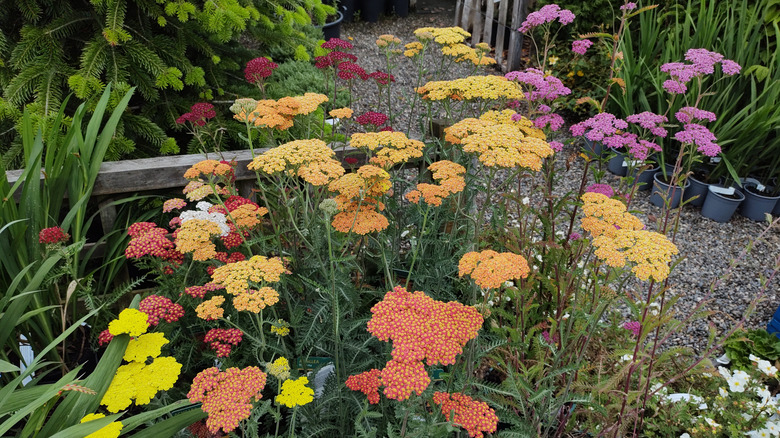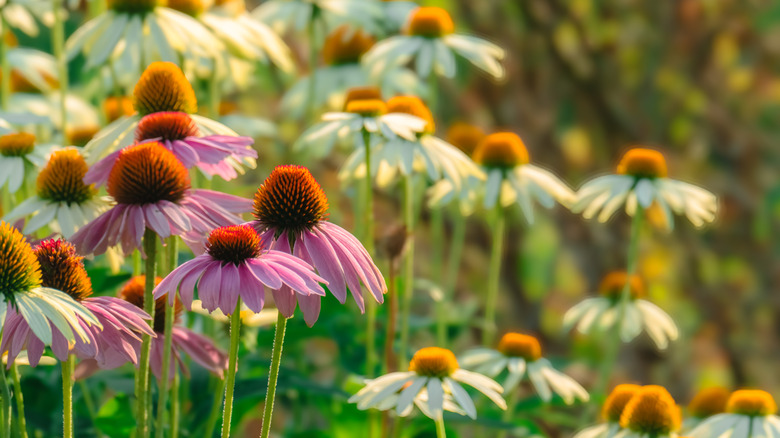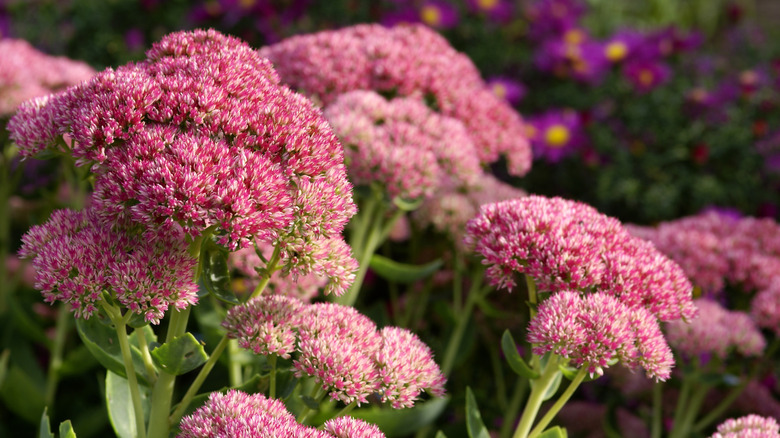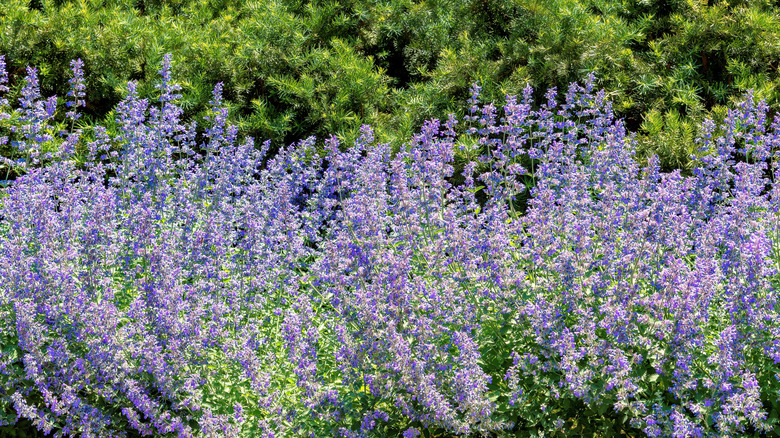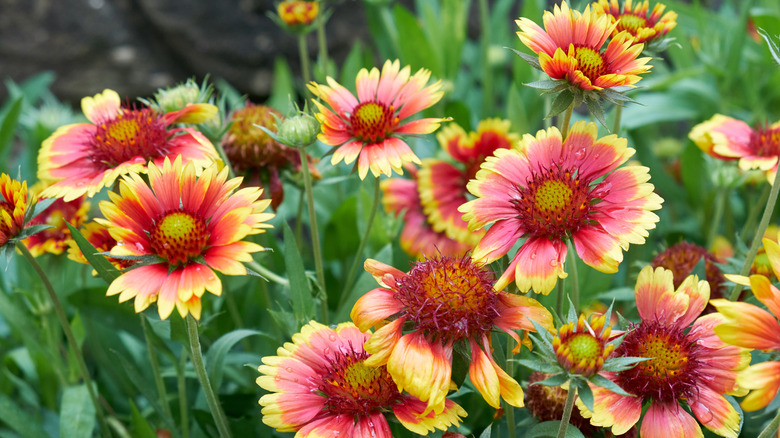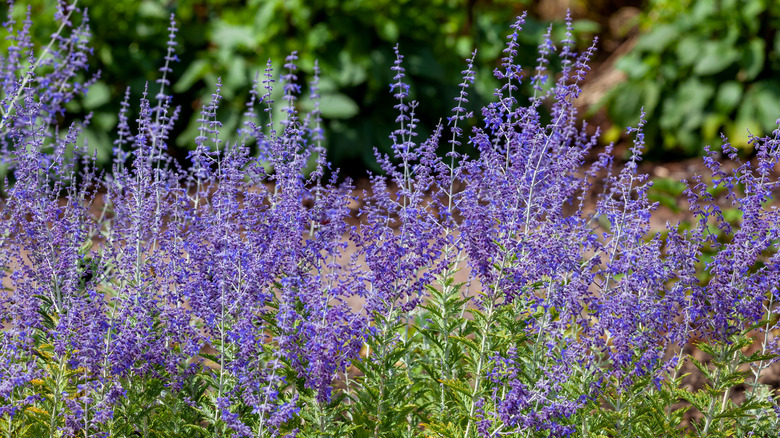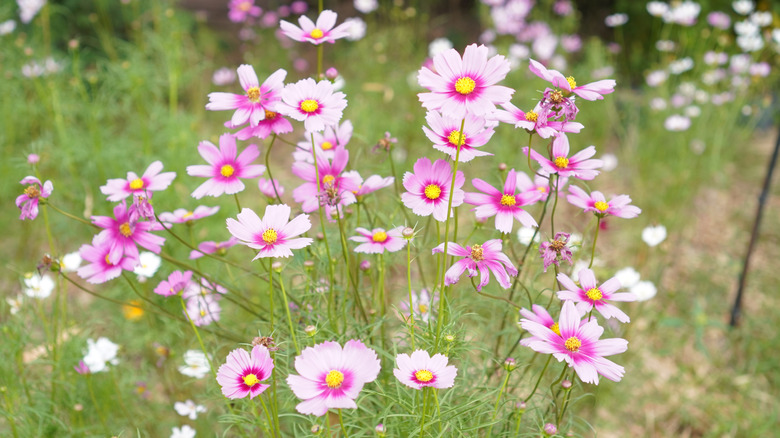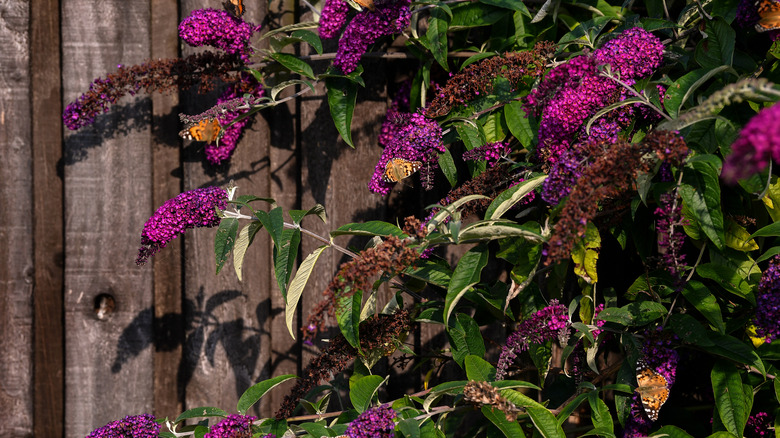17 Stunning Fast-Growing Flowers That Thrive In Sandy Soil
Most gardeners will tell you that soil is one of the most important aspects of gardening. As a professional gardener, improving soil health, drainage, and texture is a constant consideration in my work. Knowing what kind of soil you have is the first step to knowing how to improve it. But it's also important to choose plants suitable for your soil type. If your yard has sandy soil, you're in luck because it has good drainage, and there are many beautiful fast-growing perennials and annuals that thrive under these conditions.
Though sandy soil's efficient drainage and light, airy texture are both desirable in the garden, it does have one drawback. Sand does not hold moisture very well, so gardens with sandy soil usually require more frequent watering, and are suitable for drought-tolerant plants. But luckily, it's easy to improve the texture and moisture absorption of sandy soil with amendments like compost, aged manure, peat moss, and loamy garden soil.
Sandy soil's qualities make it a good fit for fast-growing plants that need frequent dividing, because it's easy to dig and plant in. Annuals that reseed also do well in sandy soil, because it provides a permeable surface for seeds to germinate. The plants listed here, which include cosmos, dianthus, penstemon, and coneflowers, are all good choices for gardens that have loose, airy, well-draining soil. I've grown all of these over the years and I find they do very well in this kind of growing environment, filling the garden with beauty and requiring very low maintenance.
Black eyed Susan
Black-eyed Susans are by far the most popular cultivar of Rudbeckia, though other cultivars come in a range of colors including orange, red, and burgundy. These sun-lovers are cold hardy in USDA Zones 3 through 9, and bloom for weeks from midsummer into fall. They're easy to grow, not fussy about soil, and will spread quickly and freely in the garden. Their tendency to reseed makes them a good fit for sandy soils, because then the seedlings are easy to pull up when they appear. These colorful perennials also attract birds to their tasty seeds.
Dianthus
There are several types of dianthus (also known as pinks, Cheddar pinks, or clove pinks). The perennial variety with spiky, blue-green leaves that quickly grows into a low spreading mat is known as Dianthus gratianopolitanus. It likes sun, is drought-tolerant, hardy in zones 3 through 9, and prefers a sandy, loose soil. There are single and double flowered varieties, solids and bi-colors, and most cultivars have a pleasant, clove-like scent. 'Firewitch' is popular (hot pink single flowers), or try 'Jan Louise' (pale pink double with magenta center) or 'Stargazer' (white single with burgundy center).
California poppy
The most commonly seen California poppies (Eschscholzia californica) are the bright neon orange ones with pale gray-green leaves, but these sprightly flowers come in a variety of colors including brights and pastels. Once established, California poppies tend to reseed, and are a reliable source of late-summer color. They love sandy, dry soil and need plenty of sun to thrive. Though they're only hardy in zones 8 through 10, they will often reseed themselves in sunny spots in zones 6 and 7. Just check with your local extension office to ensure they're not regarded as invasive in your area.
Blue mist flower
There are a couple of types of plants commonly known as blue mist flower, including the shorter flowers grown as annuals (Ageratum), and the fast-growing, taller perennials (Conoclinium coelestinum), which are hardy in zones 5 through 10. These tiny button like flowers are a pleasing shade of periwinkle, and also come in white. They add long-lasting beauty and texture to the late summer garden. The shallow roots love a sandy soil, and though they spread vigorously, they're easy to pull up if you have too many.
Tall phlox
Tall phlox (Phlox paniculata) are a boon for gardeners in late summer, providing weeks of effortless color in shades of pink, white, red, and purple. They bloom well in partial shade to full sun, and love a sandy, well-draining soil. The semi-woody clumps grow fast and increase in size each year, and are easily divided in spring as new growth appears. To prevent powdery mildew on the leaves, make sure they have plenty of space for air circulation. Tall phlox are cold hardy in zones 4 through 8, and some are hardy to zone 3.
Penstemon
Penstemon are lovely cottage garden favorites. The spiky flower stalks are covered in blooms shaped like snapdragons, blooming for weeks in summer and attracting many pollinators. Also known as beardtongue, penstemon comes in many colors including blue ('Electric Blue' is a popular cultivar, with two tone pale blue and lavender flowers), pink, purple, peach, yellow, and white. This fast-growing perennial prefers a sandy, well-drained soil to prevent root rot. It's hardy in zones 3 through 10, and will bloom in partial shade as well as full sun.
Threadleaf coreopsis
Threadleaf coreopsis, also known as tickseed, is a daisy-like flower that forms loosely-matted root clumps. All varieties of coreopsis perform well in sandy, loose soil, and are drought-tolerant and fast-growing once established. These airy flowers come in many colors, and add delicate but long-lasting beauty to the summer garden. Deadhead the spent blooms to keep them flowering through autumn. Most varieties are hardy in zones 4 through 9, but some newer cultivars are less cold tolerant, so make sure they're appropriate for your growing zone.
Day lilies
Remember that the term "day lily" doesn't necessarily refer to the common, native orange variety known as the tawny day lily (Hemerocallis fulva), which is regarded as invasive in some states. Species day lilies (Hemerocallis spp.) come in a huge range of sizes and colors, and fill up the summer flower bed with fast-growing beauty. These low-maintenance, sun-loving perennials thrive in sandy soil, and are hardy in zones 3 through 9. They also deter weeds with their thick root clumps that are easy to divide and replant.
Bearded iris
Bearded iris (Iris germanica) are real show-stoppers in the spring garden. Reblooming varieties produce a second round of blooms in late summer. Irises are easy to grow, and are hardy in zones 3 through 9. However, they do need two very basic conditions met. First, they should be planted in well-drained, sandy soil, with a bit of the rhizome exposed for sun absorption and to prevent rot. Secondly, they're fast growers and the clumps will generally double in size each year, requiring regular dividing. I divide them every two years which keeps them healthy and thriving.
Yarrow
Yarrow (Achillea) is an easy-care, fast-growing perennial that blooms for weeks in summer. Its colorful blooms bring bees and other beneficial pollinators to your garden. It's also heat and drought-tolerant, hardy in zones 3 through 9, and prefers a loose, sandy soil. Some varieties of yarrow spread out from central clumps, while some spread via meandering roots, but yarrow is generally easy to control and doesn't spread aggressively. However, common yarrow may be regarded invasive in some regions, so check with your local extension office before planting.
Coneflowers
Coneflowers (Echinacea) are sturdy perennials that attract both pollinators and birds to the garden, first for their nectar in summer and then for their seeds in fall. They're easy to grow and aren't too fussy about soil, though they prefer a well-drained, sandy soil. They bloom best in full sun, and are drought-tolerant once established. Echinacea are fast growers, hardy in zones 3 through 9, and will quickly fill the flower bed with colorful blooms. Divide them in spring when new growth appears.
Stonecrop/sedum
There are many kinds of sedums, from upright to creeping varieties. The upright ones provide dramatic color in the late summer garden, and if left intact, also provide winter interest and cover for wildlife. Though they will bloom fine in partial shade, I've found that sedums perform best in full sun and sandy soil. With these conditions, they can become very fast growing, reaching their optimum height and needing dividing about every 2 years. They're drought-tolerant, hardy in zones 3 through 11, and can be divided or replanted at almost any time.
Flowering catmint
Flowering catmint (Nepeta) is a fragrant perennial herb that produces long spikes of violet blue flowers that attract bees, butterflies, and hummingbirds. In full sun and a well-drained, sandy soil, catmint will increase rapidly into large clumps, which can be divided in early spring or fall. Catmint is hardy in zones 3 through 10, and its strong scent makes it deer and rabbit resistant. I like to deadhead the spent flower stalks to keep the blooms coming, as they provide good nectar-rich food for late season pollinators. This species is regarded as invasive in West Virginia and Kentucky.
Blanket flower
Blanket flowers (Gaillardia aristata) are daisy-like perennials that produce summer blooms in bright, sunny colors (my favorite is 'Arizona Apricot' which is yellow with orange centers). They're reliable bloomers and fast growers, preferring full sun and well-drained, sandy soil to flourish. Blanket flowers are compact, easy-care perennials that are hardy in zones 3 through 10. Deadhead the spent blooms to keep them looking neat and encourage new flower buds.
Russian sage
Russian sage (Perovskia atriplicifolia) is a great late season pollinator plant, attracting many bees and butterflies to its floriferous stalks covered in purple flowers. This aromatic perennial, hardy in zones 4 through 9, has a pungent scent that repels deer, rabbits, and mosquitoes. It tends to be a fast grower, and does well in dry, sandy soils and full sun. Trim it back well in early spring to remove old stems and encourage fresh growth.
Cosmos
Cosmos are usually planted as annuals. They're hardy in zones 6 through 11, but often reseed themselves in sunny garden beds, so they behave somewhat like a tender perennial. Once new seedlings appear in summer, they grow fast as long as they get regular water. They like loose, sandy soil and will reseed happily once established. There are many lovely varieties in shades of pink, white, red, magenta, yellow, and orange. Personally, I love the fluffy double-petaled 'Bon Bon' cultivar, which comes in white, pink, and crimson. Garden cosmos (Cosmos bipinnatus) is regarded as invasive in West Virginia.
Butterfly bush
The butterfly bush (Buddleia) is a flowering perennial that is often treated like a shrub. It thrives best if you cut back the wooden stems in spring, to encourage new growth. This also helps keep them at a manageable size, because they tend to be fast-growing. The colorful flower panicles come in a wide range of hues from white to deep purple, and attract many butterflies and bees. They are mainly cold hardy in zones 5 through 10, and prefer a well-drained sandy soil. Check with your local municipality before planting because some species are regarded as invasive.
